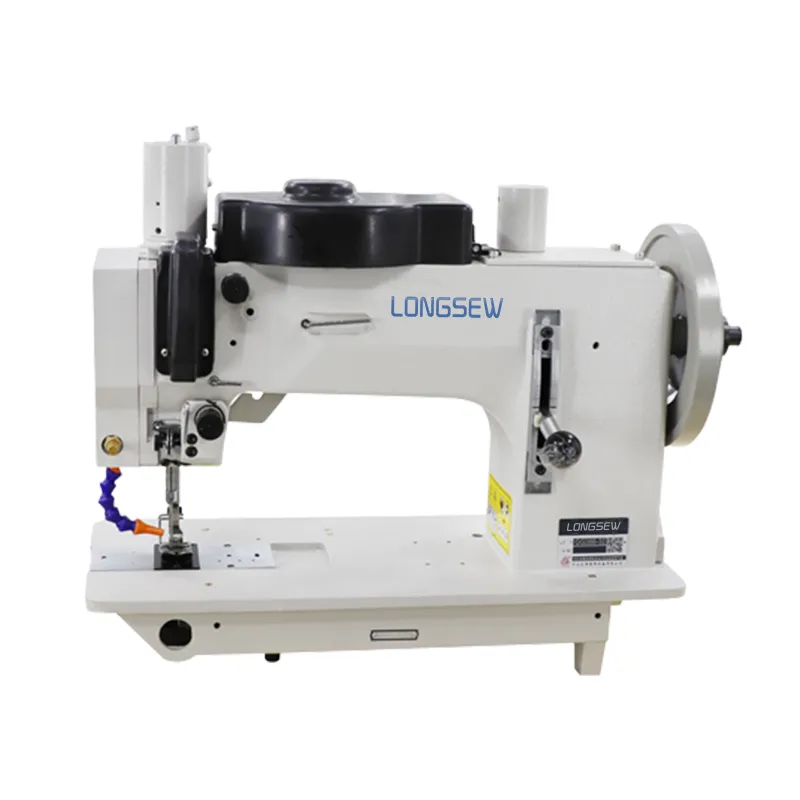what does overlock machine do
Understanding the Overlock Machine Its Functionality and Importance in Sewing
Sewing enthusiasts and professional tailors alike often rely on various specialized tools to achieve high-quality finishes in their projects. One such essential tool is the overlock machine, also known as a serger. But what exactly does an overlock machine do, and why is it essential in the world of textiles? This article delves into the various functions of an overlock machine and its significance in both home sewing and the garment industry.
What is an Overlock Machine?
An overlock machine is a type of sewing machine that trims the edges of the fabric while simultaneously stitching them together. Unlike conventional sewing machines that typically use a single needle and straight stitch, overlock machines use multiple threads and specialized stitches to create a clean, finished edge on fabric pieces. The most common type of stitch produced by an overlock machine is the overlock stitch, which provides excellent stretch and durability, making it ideal for knit fabrics and woven materials alike.
Key Functions of an Overlock Machine
1. Edge Finishing One of the primary functions of an overlock machine is to finish the raw edges of fabric. When fabric edges are left raw, they are prone to fraying and unraveling over time. An overlock machine encases the edge of the fabric with thread, effectively preventing fraying and enhancing the garment’s longevity.
2. Seaming Overlock machines can sew seams just like conventional sewing machines, but they do so with added precision and speed. The machine’s design allows it to simultaneously stitch and finish the fabric edges, saving time and ensuring that seams are durable and neat.
3. Stretch and Flexibility Overlock stitches maintain the fabric's stretchability, which is particularly important for knit fabrics. Conventional sewing machines may create seams that are less flexible and more likely to break under tension. In contrast, overlocked seams can handle the natural movement of fabric, making them ideal for activewear and fitted garments.
what does overlock machine do

4. Differential Feed Many overlock machines feature a differential feed mechanism that allows for the adjustment of the fabric feed rate. This feature is crucial when working with fabrics that tend to stretch or pucker, such as knits or delicate fabric. By adjusting the feed, you can ensure even stitching and prevent distortion of the material.
5. Gathering and Ruffling Overlock machines can also be used to create ruffles and gathers, which are common design elements in garments. With the right settings, users can create beautiful, consistent ruffles suitable for skirts, blouses, and other clothing items.
Importance of Overlock Machines in Garment Production
In the garment industry, efficiency and quality are paramount. Overlock machines play a critical role in achieving these goals. Their ability to quickly and effectively finish seams allows manufacturers to produce garments at a higher speed without sacrificing quality. Since overlock machines can create professional finishes in a single pass, they reduce the need for additional processes, streamlining production and minimizing labor costs.
Moreover, the durability of overlocked seams contributes to customer satisfaction. Garments that are made with overlock stitches tend to have a longer lifespan, appealing to consumers' desires for quality and value. In competitive fashion markets, producing garments that can withstand wear and tear is essential to brand reputation and customer loyalty.
Conclusion
In summary, overlock machines are integral to the sewing process, serving multiple functions that enhance both the efficiency of construction and the quality of finished garments. From edge finishing to providing stretch seams, their versatility makes them an invaluable tool for both home sewists and professional garment manufacturers. As sewing technology continues to evolve, the overlock machine will undoubtedly remain a cornerstone of textile production, keeping pace with the demands of modern fashion and craftsmanship. For anyone serious about sewing, investing in an overlock machine is a step towards achieving professional-quality results and mastering the art of garment making.
-
Industrial Cylinder Arm Sewing Machine: Revolutionizing Heavy-Duty SewingNewsJul.28,2025
-
Cylinder Arm Sewing Machine: Perfect for Special Sewing ApplicationsNewsJul.28,2025
-
Cylinder Bed Sewing Machine: Essential for Sewing Complex MaterialsNewsJul.28,2025
-
Heavy Duty Sewing Machine: The Essential Tool for Industrial ApplicationsNewsJul.28,2025
-
Computerized Pattern Sewing Machine: Revolutionizing Precision StitchingNewsJul.28,2025
-
Heavy Duty Industrial Sewing Machine: Power Meets PrecisionNewsJul.28,2025
-
Leather Sewing Machine: The Industrial Standard for Tough MaterialsNewsJul.18,2025


























